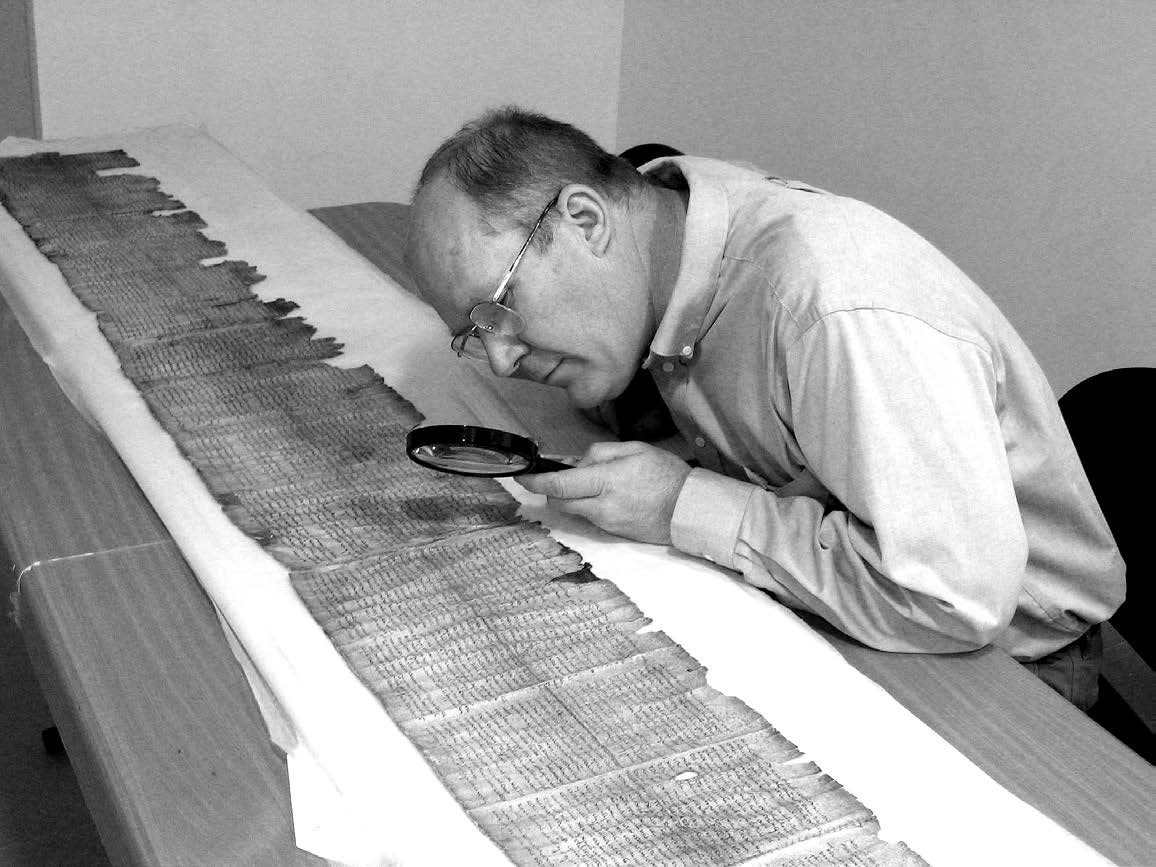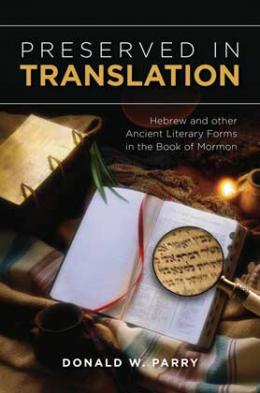Preface
Vital Messages of the Book of Mormon
I feel strongly that my own scholarly research of the Book of Mormon must never lose sight of the remarkable spiritual messages within its pages that must be given primacy of place in heart and mind. For this reason, I want to call attention to three eternal, far-reaching matters before I focus on Hebraisms and other ancient literary forms in the Book of Mormon. At the end of this book I return to this devotional focus in an effort to balance the findings of linguistic inquiry, as intriguing as they may be, with what I hope readers will receive as the greater, spiritual wonders of the inexhaustible Book of Mormon.
The Book of Mormon focuses on Jesus Christ. In very significant ways, the Book of Mormon is centered on Jesus Christ and his atonement. Of all the book’s marvelous teachings, those that pertain to Jesus Christ are the most vital for a life of happiness and purpose with faith in a glorious future. Moreover, the Book of Mormon is an indispensable witness of Jesus Christ and his atonement.
The Holy Ghost witnesses that the Book of Mormon is, verily, the word of God. The greatest and most powerful witness of the Book of Mormon is the Holy Ghost. As a member of the Godhead, he comprehends and bears testimony of this scriptural record. If we sincerely and earnestly seek a witness of it, the Holy Ghost will reveal to us that it is true (see Moroni 10:4–5). Without divine assistance, we are unable to comprehend the things of God; such things must be “spiritually discerned” through the power of the Holy Ghost. As Paul explained,
Now we have received, not the spirit of the world, but the spirit which is of God; that we might know the things that are freely given to us of God. Which things also we speak, not in the words which man’s wisdom teacheth, but which the Holy Ghost teacheth; comparing spiritual things with spiritual. But the natural man receiveth not the things of the Spirit of God: for they are foolishness unto him: neither can he know them, because they are spiritually discerned. (1 Corinthians 2:12–14)
In the end, an abiding testimony of the Book of Mormon comes through the power of the Holy Ghost—and through no other source.
The Book of Mormon transforms lives. President Russell M. Nelson shared his deep conviction when he taught, “The Book of Mormon stands as another testament of Jesus Christ. The power of its message will transform the lives of all who earnestly study its precious pages.”[1] Since its publication in 1830, the Book of Mormon has touched the hearts of millions of people. The Prophet Joseph Smith said that a person will “get nearer to God by abiding by its precepts, than by any other book.”[2] There is no hint of overstatement in saying that the Book of Mormon has a major role in the history of the world in bringing souls to Christ.
My Personal Academic Journey
My academic study of the Hebrew Bible began in the 1980s when I enrolled in several courses at Brigham Young University. During this period, I was trained by one of the preeminent Hebrew Bible scholars in the world: Professor Stephen D. Ricks. He, along with other specialists, taught me Biblical Hebrew (the Hebrew of the Old Testament), Qumran Hebrew (the Hebrew of the Dead Sea Scrolls), Mishnaic Hebrew (the Hebrew of the Mishnah), and Modern Hebrew (the language of those who live in Israel). After completing those studies, I enrolled at the Hebrew University of Jerusalem, where I continued my study of Hebrew. During this time in Israel, I devoted scant free time to also studying Hebrew structures, poetry, and Hebraisms in the Book of Mormon. With a certain level of methodological rigor, I read and marked up a copy of the Book of Mormon with my findings. I was persuaded then, and I remain convinced now, that the Book of Mormon contains hundreds of Hebraisms and Hebrew-like forms that survived translation into English.
 Donald W. Parry studies the Great Isaiah Scroll in the museum vault
Donald W. Parry studies the Great Isaiah Scroll in the museum vault
of the Shrine of the Book Museum, Jerusalem, Israel. This scroll, written in Hebrew, is perhaps the best-known biblical scroll found among the Dead Sea Scrolls. It was one of the initial scrolls found in Qumran Cave 1 in 1947. It was wrapped in a linen cloth and stored in a clay jar. It consists of seventeen pieces of sheepskin sewn together into a single scroll and shows signs of being well used before it was stored away. The scroll comprises fifty-four columns of text that vary
in width and average about twenty-nine lines of text per column. Measuring almost twenty-four feet in length and about ten inches in height, this scroll is the longest of the Qumran biblical scrolls. As such, it presents a view of what biblical manuscripts looked like at the end of the Second Temple era, about a century before the birth of Jesus Christ. Parry’s latest book for academia, titled Exploring the Isaiah Scrolls and Their Textual Variants (Leiden, The Netherlands: E. J. Brill, 2020), deals with this scroll.
Over many years I have published a variety of publications on Book of Mormon Hebraisms and Hebrew-like structures (see “Works Cited” herein), all the while fine-tuning my views and gaining additional knowledge—“precept upon precept” and “line upon line” (Isaiah 28:10). My first publication on the topic—The Book of Mormon Text Reformatted according to Parallelistic Patterns (1992)—received very modest distribution (in fact, the initial print run was only six copies!). Subsequently, I expanded and fine-tuned that early study under the title Poetic Parallelisms in the Book of Mormon.
Poetic Parallelisms in the Book of Mormon introduces the reader to approximately three hundred cases of chiasmus in the Book of Mormon and hundreds of instances of other kinds of parallelism (e.g., synonymous, coordinating, antithetical, extended, and climactic forms). The work also identified numerous instances of refrain, repeated ands, and other kinds of repetition. Every instance calls to mind similar structures that are prevalent in the Hebrew Bible.
Many components of Poetic Parallelisms in the Book of Mormon constitute my original research, which, of course, was informed by the work of others (especially Bullinger’s Figures of Speech Used in the Bible). My original research covered the following topics (all included in the present work): climactic forms; repetition of theme words; synonymous, antithetical, extended, coordinating, and number parallelism; repetition of and, the, and possessive pronouns; refrain; symbolic action as prophetic curse; “and it came to pass,” and prophetic speech forms. These studies represent my own contributions to the study of Hebrew-like literary forms that evoke aspects of Biblical Hebrew underlying the Book of Mormon text. For additional treatments of this vast subject, see the bibliography.
In most of the chapters I have added my own examples of Hebraisms (elements of Hebrew language such as idioms, expressions, names, or poetic forms present in another language) and Hebrew-like structures, literary forms, and grammatical forms. Much of my research is conducted by accessing morphologically tagged texts in large digitized scriptural corpora—the Hebrew Bible, the Book of Mormon, and other scriptural texts. This has greatly enhanced my ability to identify additional examples of Hebraisms in the Book of Mormon.
A few years after the publication of Poetic Parallelisms in the Book of Mormon, I was fortunate to obtain a full-time position at BYU, where I have taught courses in Biblical, Qumran, and Mishnaic Hebrew for more than twenty-five years. Whereas before I was Professor Ricks’s student, now I am his colleague. In addition to teaching, I research, write, and publish scholarly articles and books on the Hebrew Bible and the Dead Sea Scrolls that are distributed in various venues to a worldwide audience, including academic and research libraries throughout the world. I also present my findings at academic conferences, congresses, and symposia in many parts of the world.
All of this training—teaching, researching, and publishing—has uniquely positioned me to become very familiar with the ancient Hebrew language of the Old Testament and the Dead Sea Scrolls, including advanced lexical and inflected forms, various grammatical components, and complex Hebrew verbal systems. With this advanced knowledge of Hebrew, I am able to write regarding Hebraisms and various indications of ancient Hebrew that exist in the English translation of the Book of Mormon.
A couple of years ago I spoke on Hebraisms in the Book of Mormon to an audience of some five hundred people. Concluding my presentation, I bore testimony of the truthfulness and power of the Book of Mormon and its translator, the Prophet Joseph Smith. Although we were in a setting where it was inappropriate to applaud, the audience did it anyway. As I later learned, they thought my presentation was so unique, informative, and powerful (the power of the Holy Ghost and not my power) that they spontaneously applauded without any concern for propriety. This experience and others like it have prompted me to make this book widely available, with some new content and first-ever published examples of Hebraisms and Hebrew-like structures.
From my earliest years I have had a deep and abiding testimony that the Book of Mormon is true, that Joseph Smith was a prophet and seer, and that Jesus Christ is my Savior and Redeemer. While learning about Hebraisms in the Book of Mormon did not give me a testimony, it has given me more depth and understanding regarding the antiquity of the Book of Mormon.
Notes
[1] Nelson, “Treasured Testament,” 61.
[2] Smith, History of the Church, 4:461.
